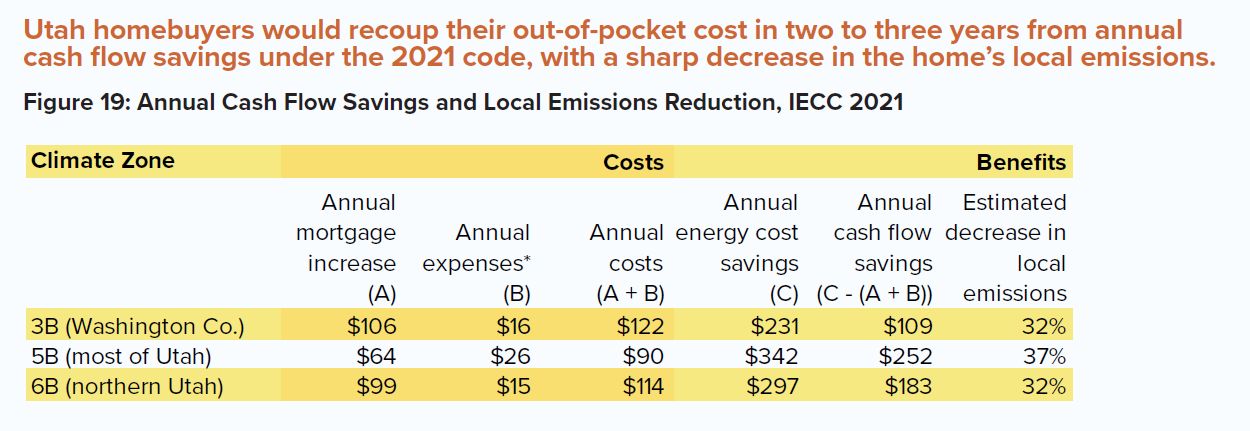Utah has kept up to date on commercial building code standards, but it has maintained older residential building standards that fall short of more efficient building practices.
To a Higher Standard: Building Codes, Improved Efficiency and Air Quality in Utah explores possible new standards with an eye toward air quality, examining costs and benefits.
Would you like a quicker review of the report? Read the executive summary.
KEY FINDINGS OF THIS REPORT
- Driven by Utah’s rapid population growth, over 12% of Utah’s homes have been built since 2010 – a far greater proportion than the U.S. average. With a robust pace in new residential and commercial construction expected to continue, there is a unique opportunity to build in a manner that reduces each structure’s pollution emissions. The payoff is long-term, with many of these buildings maintaining reduced emissions far into the future.
- Heating air and water for residences and commercial buildings accounts for around 6% of winter inversion emissions for most Utahns; during other seasons and for Utahns living off the Wasatch Front, these emissions are a smaller proportion of local air pollution.
- Given the regional variations in air quality issues related to area source emissions, Utah might explore whether relevant variations in building codes are appropriate.
- The 2021 energy efficiency building standards are set for review by the Utah Legislature for adoption, rejection or amendment during the 2023 General Session.
- The main arguments for updating the energy efficiency standards in the building code include: lower utility costs for residents, better air quality, and an increase in Utah employment. The main points of opposition include: new homes are only a small part of the problem, home costs are too high already, and the government is getting too specific in its building mandates.
- A study of updating the Utah commercial code suggests a substantial savings in energy costs and commensurate emissions reduction, and most buildings would experience a decrease in per-square-foot initial construction costs due primarily to the need for smaller heating and air conditioning systems.
- Studies of updating Utah residential code show life-cycle cost savings that appear to justify a full implementation of the 2021 energy efficiency standard.
- Our analysis suggests that each home built to the 2021 energy efficiency standard would see emissions related to natural gas usage decrease by about one-third compared to homes built to current Utah code.
- The cost of implementing the 2021 energy efficiency standards would be between 0.4% and 0.7% of a new $600,000 home (under $5,000). In terms of household cash flow, initial costs would be recouped within two or three years. These homes would see a one-third annual reduction in local emissions – and a larger reduction during winter months.
- There is a standing energy efficiency loophole in Utah’s building codes that is used with such frequency that it undermines any code update. It also creates transparency issues.
- Since the 2000s, the independence of Utah’s Uniform Building Code Commission has diminished. Observers say that energy efficiency code adoption that affects air quality has become a much more political process.


